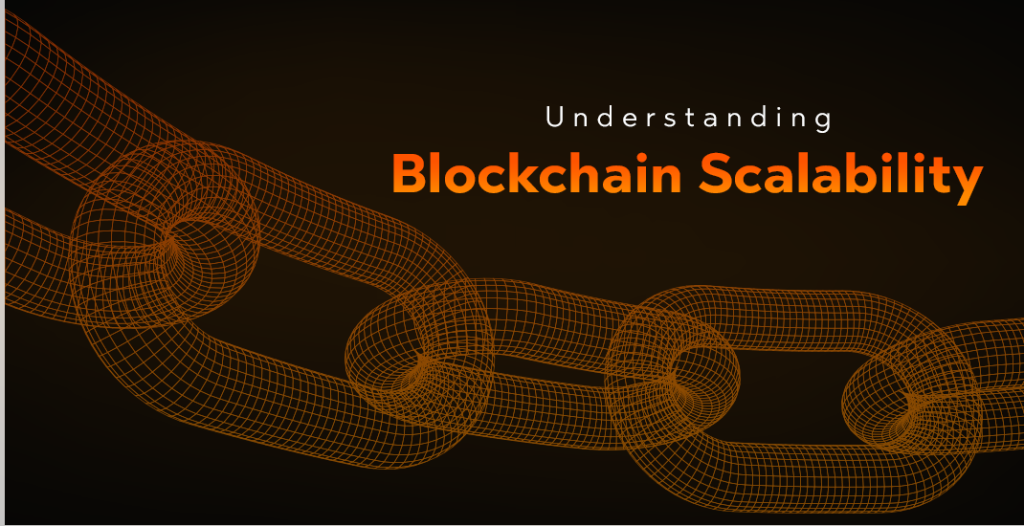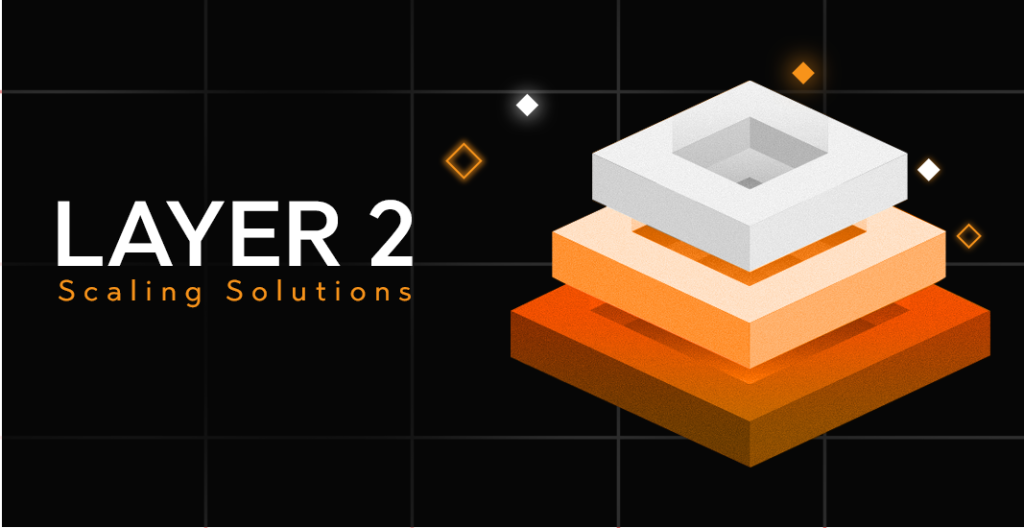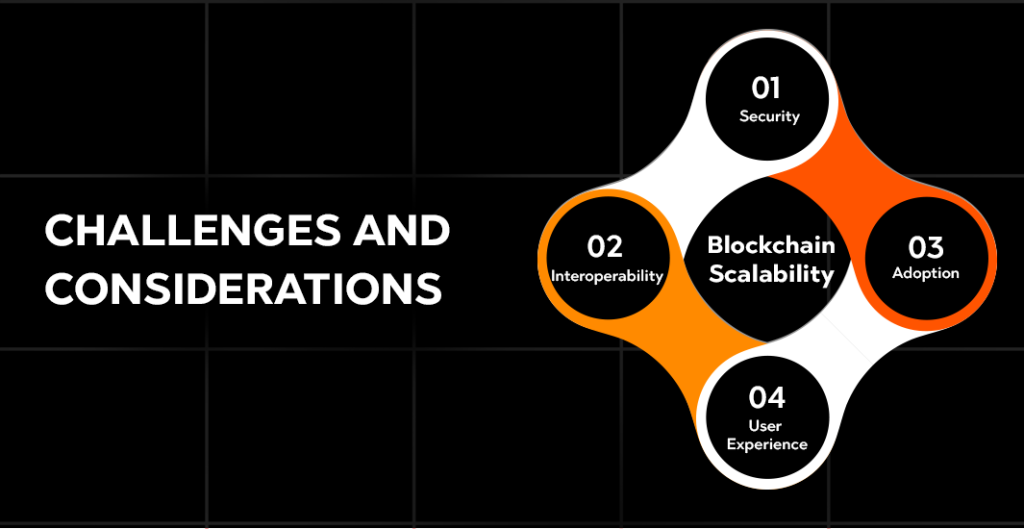
How Can Blockchain Scalability Challenges be Resolved?
Blockchain Scalability Solutions
In the fast-evolving world of blockchain technology, one of the most pressing issues is scalability. While the blockchain is celebrated for its security, transparency, and decentralized nature, its limitations in handling a growing number of transactions per second have been a roadblock to mass adoption.
In addition to these challenges, the cost of transactions and the time it takes to confirm them have also been significant concerns for blockchain users. As the demand for blockchain technology continues to surge, finding effective scalability solutions has become paramount to ensure its viability in a broader range of applications.
Let’s discuss the challenges posed by blockchain scalability and explore the techniques and solutions, including Layer 2 scaling, that are transforming the landscape.
Understanding Blockchain Scalability

Scalability Defined
Scalability in the context of blockchain refers to the network’s ability to handle an increasing number of transactions, users, and data without compromising performance or security. Blockchain technology, initially conceived with a focus on security and decentralization, faces limitations in terms of scalability that hinder its mainstream adoption.
The Scalability Challenge
Blockchain’s scalability challenges are rooted in its fundamental design. Blockchains rely on consensus algorithms that require every node in the network to validate and store every transaction. This process, while highly secure, can be time-consuming and resource-intensive.
Blockchain Scalability Techniques
- Sharding
Sharding is a technique that involves dividing the blockchain network into smaller, more manageable segments called “shards.” Each shard is responsible for processing a subset of transactions, significantly increasing the network’s capacity. Ethereum 2.0, for instance, is implementing a sharding solution to improve scalability.
- Optimized Consensus Algorithms
Traditional proof-of-work (PoW) and proof-of-stake (PoS) consensus algorithms are being fine-tuned to enhance scalability. PoS algorithms like Algorand’s aim to offer a higher transaction throughput while maintaining security.
- Sidechains
Sidechains are separate blockchains connected to the main blockchain. They enable off-chain scaling by processing transactions independently, reducing congestion on the main chain. RSK, a sidechain for Bitcoin, is a prime example.
- State Channels
State channels enable off-chain transactions by allowing participants to interact and settle transactions without involving the main chain. Ethereum’s Lightning Network is a well-known example of this technique.
- DAG (Directed Acyclic Graph)
DAG-based blockchains, like IOTA and Nano, use a different data structure that enables fast, feeless transactions, making them promising solutions for microtransactions and IoT applications.
Layer 2 Scaling Solutions

- Lightning Network (Bitcoin)
The Lightning Network is a Layer 2 scaling solution for Bitcoin. It allows users to create off-chain payment channels to facilitate fast, low-cost transactions. By reducing the load on the Bitcoin network, it significantly improves scalability.
- Plasma (Ethereum)
Plasma is a framework for creating scalable, autonomous blockchains that are linked to the Ethereum mainnet. It reduces congestion on the main chain by processing transactions off-chain and then periodically settling them on the Ethereum network.
- Optimistic Rollups
Optimistic Rollups are Layer 2 solutions for Ethereum that use a smart contract to verify transactions. They offer a more efficient way to process transactions, with the option to revert any discrepancies on the main chain.
- Zk-Rollups (Zero-Knowledge Rollups)
Zero-Knowledge Rollups utilize advanced cryptographic techniques to batch and verify transactions off-chain. This approach provides a substantial increase in scalability and reduces transaction costs while maintaining a high level of security.
Challenges and Considerations

- Security
Implementing scaling solutions introduces new security considerations. Layer 2 solutions must be rigorously tested and audited to ensure they do not compromise the security of the underlying blockchain.
- Interoperability
Ensuring that Layer 2 solutions are compatible with various blockchains and that they can communicate with each other is essential for a seamless user experience.
Furthermore, achieving seamless interoperability is a critical step towards creating a unified blockchain ecosystem where different networks can seamlessly interact, fostering innovation and expanding the capabilities of blockchain technology.
- Adoption
To realize the full potential of these scaling solutions, widespread adoption and acceptance within the blockchain community are crucial. Users, developers, and businesses need to embrace these new technologies.
Establishing trust and collaboration between blockchain projects and industries outside the crypto sphere, including traditional finance, supply chain management, and healthcare, will be instrumental in bridging the gap between innovative blockchain solutions and mainstream adoption.
- User Experience
For blockchain to gain mass adoption, Layer 2 solutions must provide a seamless and user-friendly experience. Solutions that are too complex or cumbersome may deter users.
A user-centric approach that prioritizes simplicity and accessibility will be pivotal in ensuring that blockchain and Layer 2 solutions become more than just niche technologies, ultimately driving widespread adoption across a diverse user base.
Concluding Remarks
Blockchain scalability is a pivotal challenge that the industry is actively addressing through various techniques and Layer 2 solutions. Sharding, optimized consensus algorithms, sidechains, state channels, and DAG-based blockchains are among the strategies aimed at enhancing blockchain’s capacity.
Layer 2 scaling solutions, such as the Lightning Network, Plasma, Optimistic Rollups, and Zk-Rollups, are integral to the future of blockchain. These solutions not only improve scalability but also reduce transaction costs and increase transaction speeds, making blockchain technology more accessible and practical for a wider range of use cases.
As the blockchain community continues to innovate and adapt, scalability challenges will become opportunities for growth, enabling blockchain technology to reach its full potential in revolutionizing various industries and applications.
